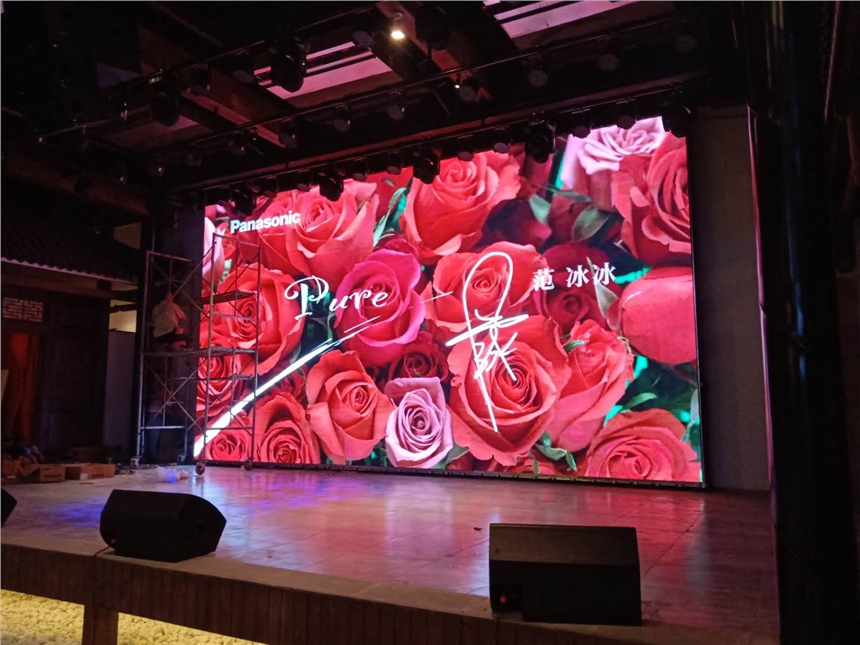首先,像素间距是多少?
像素间距描述了LED显示屏上像素(LED单元)的密度,与分辨率(有时称为点间距)有关,特别是像素中心到相邻像素中心的距离(以毫米为单位)。由于像素间距反映了两个像素之间的空间大小,因此较小的像素间距意味着像素之间的空间较小,换言之,更高的像素密度和更高的屏幕分辨率。速度。要点:●像素间距是指像素的密度●像素间距越小表示像素密度越高,分辨率越高●像素间距很重要,因为它会影响观看距离●像素间距越小,视距越近●屏幕的最佳视距也反映像素间距值
其次,为什么像素间距如此重要?
qí其 cì次 , wèi为 shén什 me么 xiàng像 sù素 jiān间 jù距 rú如 cǐ此 zhòng重 yào要 ?
Pixel spacing is important because it affects the optimal viewing distance of the display. Lower pixel spacing values ??enable images to achieve smoother edges and finer detail. This allows the viewer to get closer to the screen and enjoy a clear image without seeing the individual pixels. In determining the viewing distance and pixel pitch, the thumb rule means that a smaller pixel pitch is equivalent to a smaller viewing distance. Conversely, a larger pixel pitch will also increase the minimum viewing distance. Therefore, a 1.2mm screen will have a higher resolution and a smaller optimal viewing distance than a 16mm screen. Note that although higher pixel densities can improve visual quality, this does not mean that in any case, smaller pixel pitches are an ideal choice. The extra pixel density is intended to provide a closer viewing distance. At higher viewing distances, higher pixel densities lose their visual advantage and increase cost.
像素间距很重要,因为它会影响显示器的最佳观看距离。较低的像素间距值??使图像获得更平滑的边缘和更精细的细节。这使得观看者能够更接近屏幕,在不看到单个像素的情况下享受清晰的图像。在确定观看距离和像素间距时,拇指规则意味着较小的像素间距等于较小的观看距离。相反,较大的像素间距也会增加最小观看距离。因此,1.2毫米屏幕比16毫米屏幕具有更高的分辨率和更小的最佳观看距离。请注意,虽然较高的像素密度可以提高视觉质量,但这并不意味着在任何情况下,较小的像素间距都是理想的选择。额外的像素密度旨在提供更近的观看距离。在较高的视距下,较高的像素密度会失去视觉优势,增加成本。

第三,什么样的像素间距可以满足我的需要?
dì第 sān三 , shén什 me么 yàng样 de的 xiàng像 sù素 jiān间 jù距 kě可 yǐ以 mǎn满 zú足 wǒ我 de的 xū需 yào要 ?
Smaller pixel pitches usually provide higher resolution but are more expensive. Material and production costs are higher because they require more LED wafers to create higher pixel densities. So the question is, what kind of pixel spacing is the most appropriate? The answer is that the consumer can determine the optimal pixel pitch value for the LED screen by determining the optimal viewing distance of the screen. The so-called optimal viewing distance refers to the critical point of image fidelity. If the observer is too close, the image quality will be degraded or the screen will be pixelated. For example, a display with an interactive touch scheme requires a smaller pixel pitch to provide a clear image to neighboring viewers. LED screens that are played in front of the public, such as LED screens suspended on the stage, can use a higher pixel pitch. Simply put, a smaller pixel pitch provides a higher quality image, but if the screen is farther away from the viewer, then additional investment is not necessary. The industry typically uses three methods to determine an acceptable viewing distance: 10 times the rule: this is a quick way to calculate an approximate estimate of the visually sensitive distance. The calculation formula is: pixel pitch × 10 = approximate viewing distance (in feet) visually sensitive distance: also known as retinal distance, refers to a person with 20/20 vision to see the LED screen showing a coherent image instead of pixels The distance the image must be kept from the screen. The formula is: Pixel Spacing × 3438 = Visual Sensitive Distance (in feet) Average Comfort Viewing Distance: This is an estimate of the comfortable viewing distance for most people. This is a subjective estimate and will take into account variables such as human eye line of sight, content resolution and content type.
较小的像素间距通常提供更高的分辨率,但成本更高。材料和生产成本更高,因为它们需要更多的LED晶圆来制造更高的像素密度。所以问题是,什么样的像素间距最合适?答案是消费者可以通过确定屏幕的最佳观看距离来确定LED屏幕的最佳像素间距值。所谓最佳视距是指图像保真度的临界点。如果观察者离得太近,图像质量将降低,或者屏幕将被像素化。例如,具有交互式触摸模式的显示器需要较小的像素间距,以便向相邻的观众提供清晰的图像。在公众面前播放的LED屏幕,如悬挂在舞台上的LED屏幕,可以使用更高的像素间距。简单地说,较小的像素间距可以提供更高质量的图像,但如果屏幕离观看者较远,则不需要额外的投资。该行业通常使用三种方法来确定可接受的观看距离:10倍的规则:这是一种快速计算视觉敏感距离的近似估计。计算公式是:像素间距×10=近似观看距离(英尺)视觉敏感距离(也称为视网膜距离),是指具有20/20视觉的人看到LED屏幕显示相干图像而不是像素的距离必须保持在屏幕上的图像。公式为:像素间距×3438=视觉敏感距离(单位:英尺)平均舒适观看距离:这是对大多数人舒适观看距离的估计。这是一种主观估计,将考虑人眼视线、内容分辨率和内容类型等变量。

